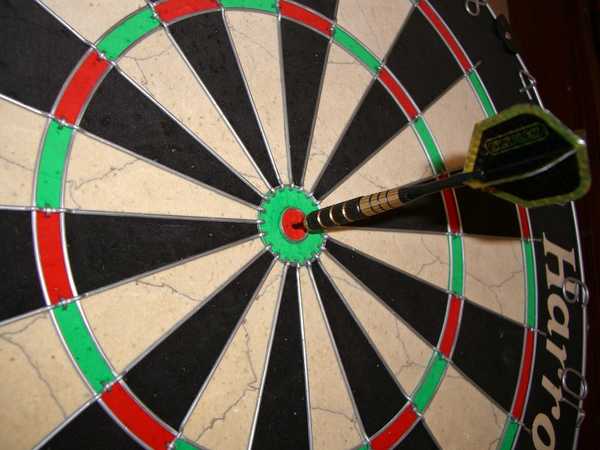What To Know About Artificial Cataract Lens Implants
Before a cataract is a cataract, it is just a lens inside your eye. This lens serves a very useful function, working with the cornea to focus light on the back of your eye. But once a cataract develops, this lens causes more trouble than benefit and it's time to remove this lens and replace it with a new one through cataract surgery. The new one, however, is an artificially created lens.
Putting artificial lenses in the eyes seems like something right out of science fiction. But it is instead science fact! And the cool part is that these lenses are completely safe as well. How can we know for sure that this lens is safe?
Artificial lenses after cataract surgery (also known as intraocular lenses) are the most common medical implant. A few million cataract surgeries are performed just in the US alone each year. And these lenses aren't just a recent development. Artificial lenses have been used after cataract surgery for decades! The track record of artificial lenses is very very strong.
In fact, its quite an engineering challenge to create a safe implant. In addition to being non-reactive within the eye, intraocular cataract lenses must be made of a material which can be completely clear to provide good optics as well as be flexible enough to be placed within the eye. And it can’t be too difficult to manufacture and mold into all the different shapes to correct vision. Quite a hefty feat!
So how is this achieved?
Artificial cataract lenses are made out of a special plastic called acrylic. Acrylic hits all the necessary checkboxes. This plastic has many beneficial properties and is completely inert within the eye. Allergies don't exist. These lenses also sit separate from the other structures of the eye within the protective capsule that originally covered the lens/cataract. All of this allows these lenses to last a lifetime in the eye. Acrylic allows for the intraocular lens revolution that we see today.
So no need to fear the artificial lens implant following cataract surgery. Artificial cataract lenses after eye surgery have had a long long history of being nice and safe! Eyes just don’t reject these lenses. The lens only provides the benefit of nice clear non-cataract vision!
How Are These Cataract Lenses Picked?

The magic behind these lenses; image by See page for author / CC BY
Refractive cataract surgery and refractive lens exchange have the remarkable ability to get people out of glasses. But this hasn’t always been the case. Back when cataract surgery was first modernized, glasses were almost always a necessity afterwards. Since then, the procedure has gotten more and more accurate and allowed for the development of refractive lens exchange and refractive cataract surgery. So how do refractive surgeons achieve this accuracy?
The prescription of the eye is primarily based upon two measurements: the length of the eye and the curvature of the cornea. The cornea does most of the focusing for the eye. The remaining part is done with the lens (and cataract when that develops). After removing this lens, it is necessary to replace the job that the old lens had with a new lens.
Early on, basic math equations were developed that took the eye length and curvature and estimated what lens should give the best vision. And for the longest time, these equations worked well.
As time has gone on and on, many more equations were developed and other measurements identified that improved outcomes. In fact, just in the past decade there has been amazing progress in calculating lenses including methods based in artificial intelligence! (The details, however, are really only exciting to nerds like me 😂).
We have achieved great accuracy in getting the perfect lens to get you out of glasses! These calculations have significantly improved over the past decade. And each year or two a new better equation is discovered.
Getting These Lenses On Target

Getting vision on target; image by Christian Gidlöf / Public domain
To get the best results, surgeons must constantly keep up with the ever-changing field to determine the best equation.
The same can be said for the diagnostic equipment that provides the measurements for these equations. Although this equipment doesn’t change quite as frequently, older technology just isn’t quite as accurate as what the newer machines can perform. And even with the same machine, good surgeons make sure that the measurements are in fact true and not due to fluctuations on the surface of the eye.
Once surgeons are using the very best equations and the best equipment, the next step for refractive surgeons to achieve the highest accuracy is to continually optimize their results. By taking all their past results, refractive surgeons are able to modify the calculations to get the accuracy as close as theoretically possible to 100%! While it’s a lot of work, it’s definitely worth it to achieve the best results!
Calculating The Lens In The Middle Of Surgery With ORA

The future on the horizon; image by Belinda / CC0
How do we get the very best vision after cataract surgery? It is very simple, become as accurate as possible. One method to achieve this accuracy is through the use of ORA intraoperative aberrometry.
The complex lens equations used to calculate the power of the artificial cataract lens are all done on measurements before the surgery. One limitation before surgery is that we can’t actually measure the power that the eye needs. The lens or cataract is still within the eye and all we can do is predict what the power should be. While these predictions are quite good, it is always helpful to have extra tools in the toolbox.
But instead of just predicting the power of the eye, we can actually just measure the eye without the cataract in place. This is done right in the middle of surgery with ORA intraoperative aberrometry.
After the cataract is removed (but before a new artificial lens is placed), light ways are bounced off the back of the eye and these light ways return back to the machine to be measured. This is the actual prescription that the eye needs and not just a prediction! Although nothing in life is ever perfect, ORA really enhances the calculations and improves accuracy and results. ORA is especially essential when the patient has had previous refractive surgery to provide stellar outcomes.
For cataract surgery, technically ORA is an optional component. But for those looking to improve their vision and get out of glasses, it is almost an essential part of the process and should be on everyone’s consideration.
Also check out Your Complete Guide Of Lenses For Cataract Surgery on EyeMountain.com
Related Articles
Please note: The general information provided on the Website is for informational purposes only and is not professional medical advice, diagnosis, treatment, or care, nor is it intended to be a substitute therefore. See the Disclaimer and Terms of Use for more information
.jpg)